Creature from ‘your worst nightmares’ with burning stinger invades US beaches
Experts are warning beachgoers in Texas not to touch animals that resemble ‘their worst nightmares’.
The creatures, called fireworms, are six to twelve inches long and have a stinger that makes people feel like their skin is on fire for hours.
Their dark brown bodies have bristles full of neurotoxins. These break off when they come into contact with human skin. They inject a poison that can also cause dizziness and nausea.
Researchers reported that several fireworms were found on barnacle logs that washed up on Mustang Island and Padre Island, near Corpus Christi.
Fireworms are found mainly in the Gulf, Atlantic and Mediterranean Seas, and researchers are warning beachgoers to keep their distance.
Fireworms have washed up on Central Texas beaches in Mustang Island and Padre Island
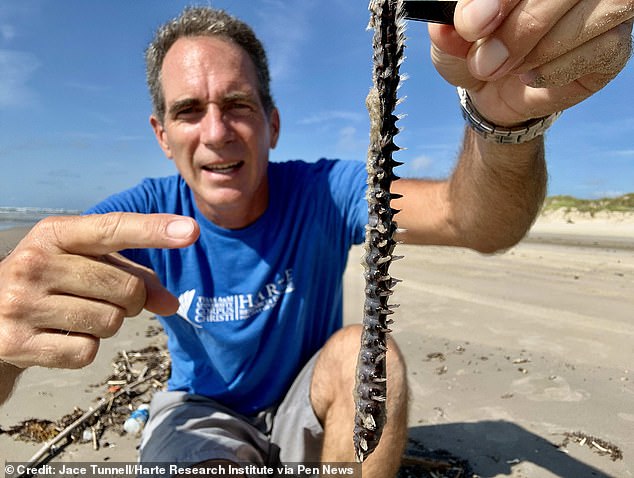
Jace Tunnell (pictured) found the fireworms on two Texas beaches and is warning beachgoers not to touch the creatures
“It’s called a fireworm because it feels like fire when you sting it,” said Jace Tunnell, director of community engagement at the Harte Research Institute.
‘If you touch it, it can very easily get stuck in your skin and then it causes tremendous pain that lasts for about three hours.’
There are 28 species of fireworms worldwide, but the Harte Research Institute for Gulf of Mexico Studies identified the fireworms found in Texas as amphinome rostrata because of their dark brown bodies, small heads, and small antennae.
These creatures can live up to nine years. They are not usually aggressive, but they use their poisoned bristles as a defense mechanism when they feel threatened.
Although a sting will not put you in the hospital or kill you, it can make you dizzy, nauseous, and give you a fever. It also leaves a red mark that will take several weeks to disappear.
“I’ve seen videos of people who’ve been stung before and even a month later they still have red marks,” Tunnell said. Pen News.
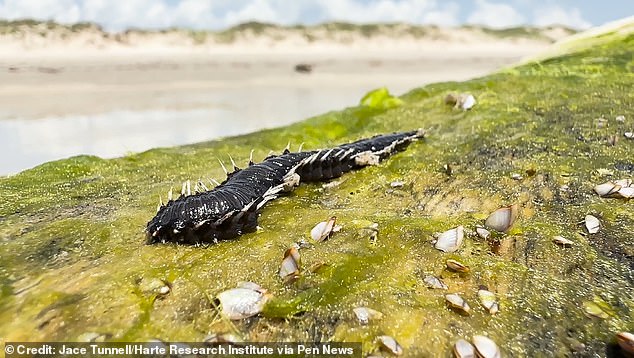
Fireworms have bristles that contain neurotoxins that can cause a severe burning sensation that lasts for three hours
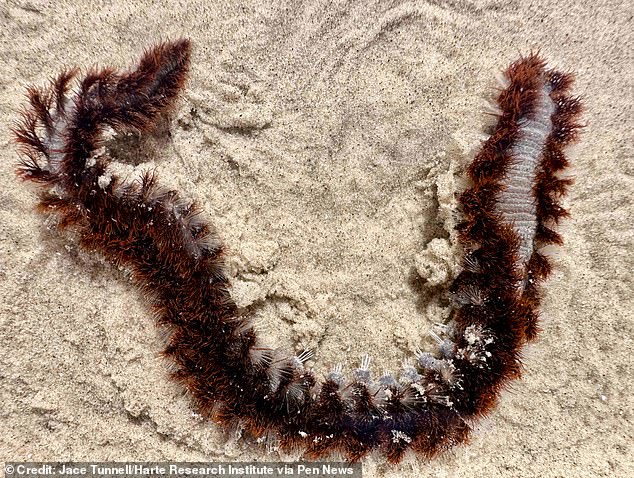
The bristles can also cause dizziness, nausea and fever if injected into the skin
The size of the fireworm population in the Gulf is still unknown due to a lack of research on the species.
‘These creatures are found all over the world, mainly because they float on debris in the ocean currents.
‘In recent weeks, a lot of waste from barnacles, their main food source, has washed up.
“We suspect that they simply surface because they are lifted up by ocean currents and wind on the debris they are riding on.”
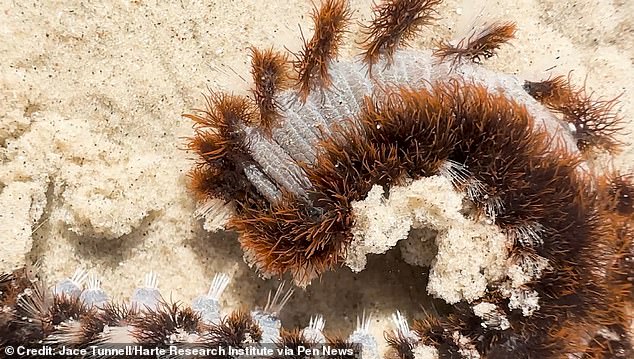
Fireworms are not considered aggressive creatures, but use their bristles as a defense mechanism when they feel threatened
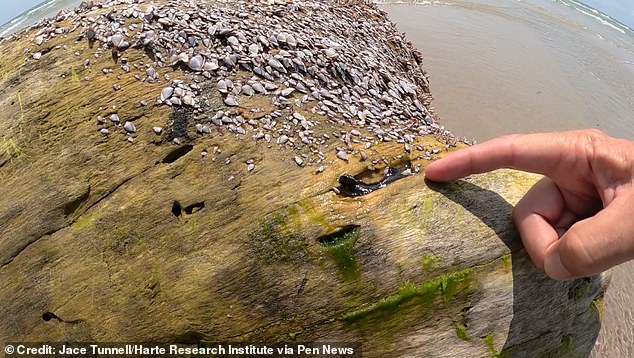
Jace Tunnell found the fireworms in barnacle-covered logs that washed up on the beach
According to Tunnell, it can be difficult to find fireworms if people aren’t looking for them. He said, “We hope people will know what to look for when they come across these worms so they can tell others.”
Beachgoers should bring duct tape to pull out the hairs if they get stung, and clean the area with a mixture of vinegar and warm water to relieve the burning sensation.
They can reproduce asexually, splitting their body into two or more parts and regenerating the head or tail into fully grown fireworms.
The creatures can also reproduce through regular mating, which typically occurs two to five days after the full moon.
Tunnell advised people not to touch the fireworms, but did suggest observing them in the water.
“They are such cool creatures if you can put them in the water,” he said, adding, “I recommend taking pictures and then releasing them back into the ocean.”
